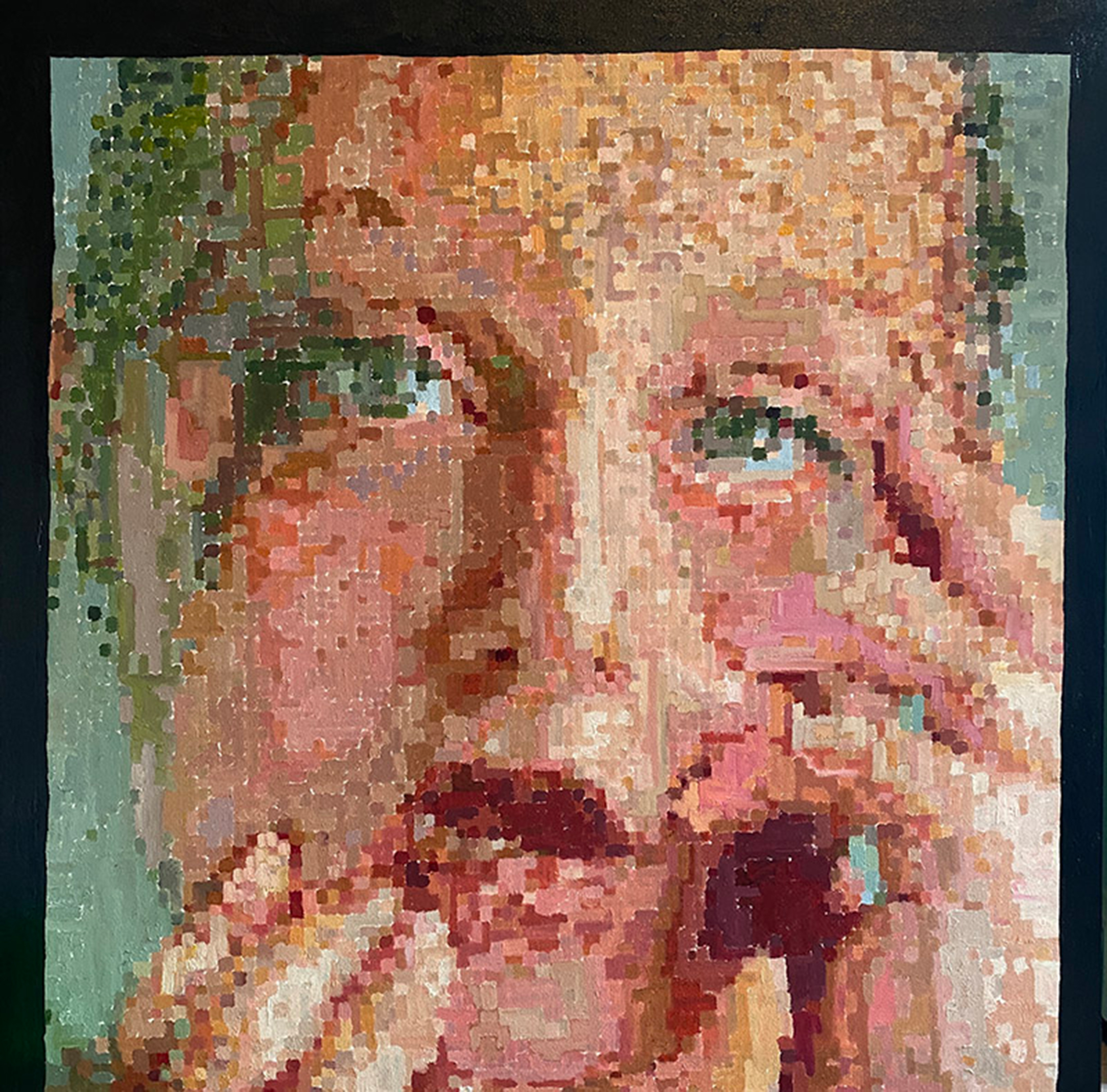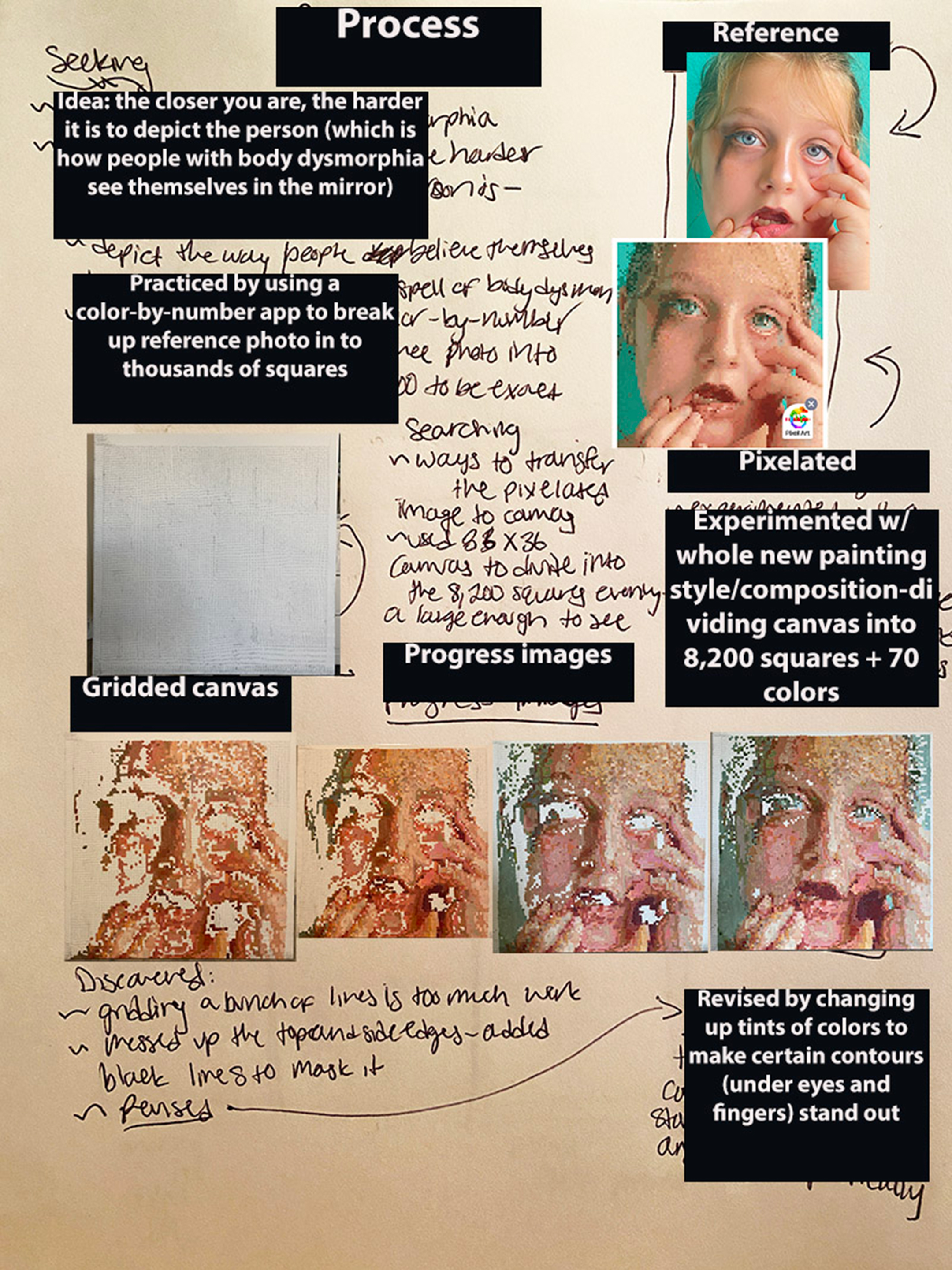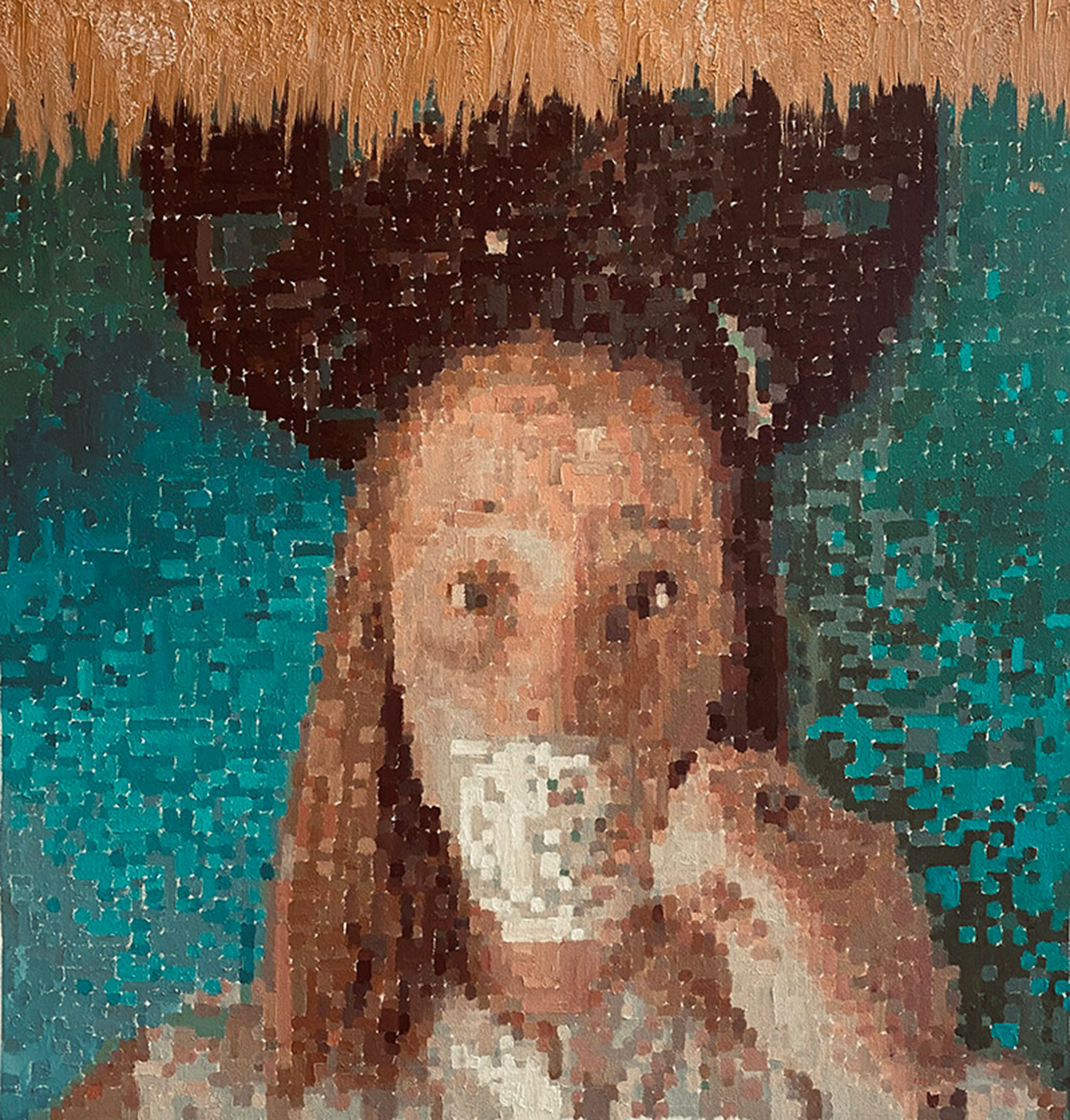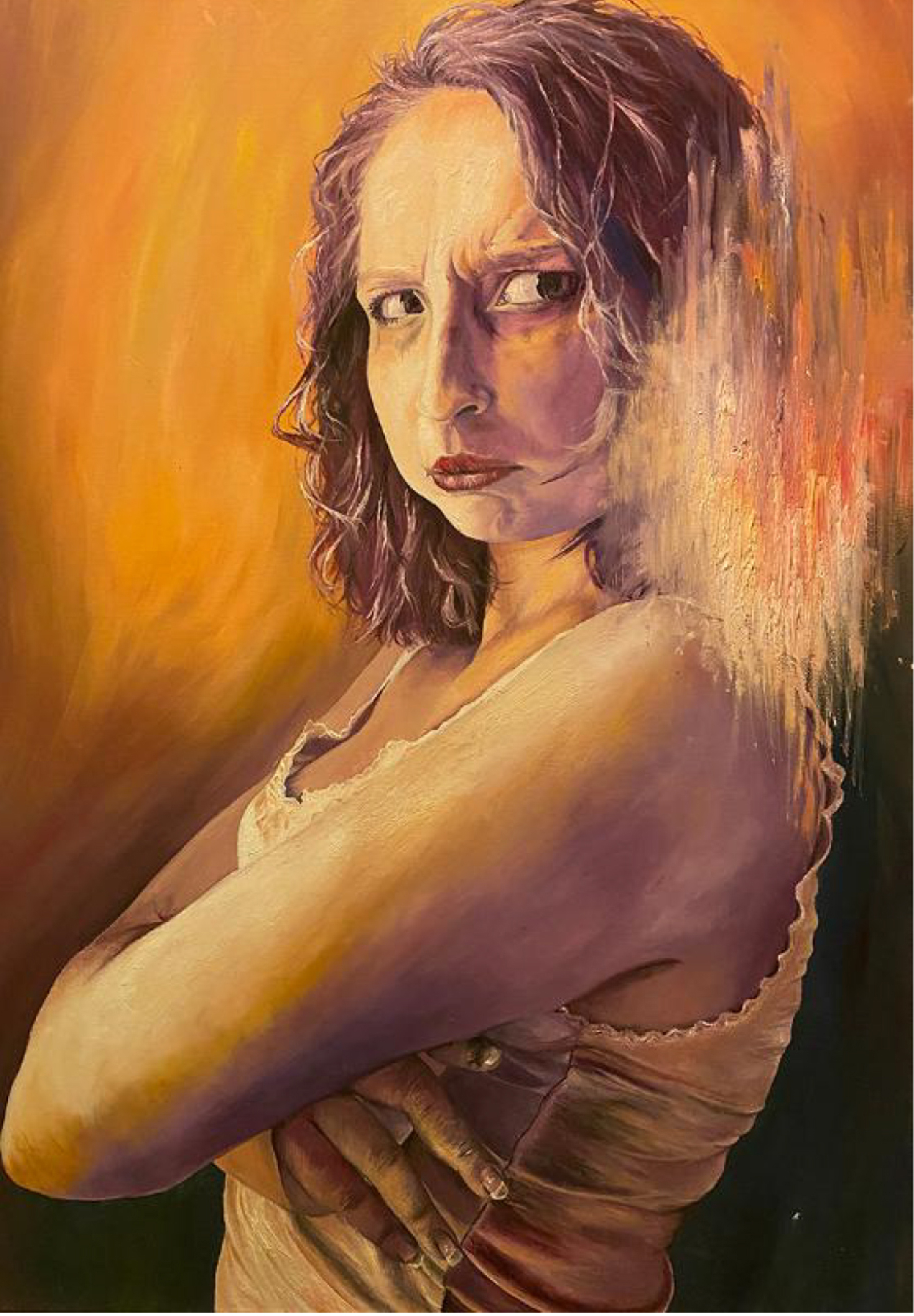AP Art of the Week
Spotlight on Artist Karsyn Bratten
The Elective’s digital art museum this week features an illustration made by Karsyn Bratten from Osceola County School for the Arts in Kissimmee, Florida.
Welcome to The Elective’s digital art museum, dedicated to the incredible work of AP Arts students. Each week we highlight a work or series created in one of the AP Arts concentrations—AP 2-D Art and Design, 3-D Art and Design, and AP Drawing (the AP Program also offers Art History and Music Theory)—as well as a statement from the artist (and, occasionally, their teacher).
From the first cave paintings to contemporary breakthroughs in virtually reality, art, in all its forms, has been a crucial way for people to process, make sense of, comment on, and grapple with the world around them. After more than a year of life in a pandemic, AP Art students have risen to the challenge of processing and making sense of the challenges—and opportunities—that have come from this perilous time. The work they submitted in their final portfolios is explicitly of the moment. It’s often challenging and provocative, but always insightful, inspiring, and expansive.
This week we feature an illustration made by Karsyn Bratten from Osceola County School for the Arts in Kissimmee, Florida.

Here’s Karsyn’s statement on the work:
“The title of this piece is ‘Unrecognizable.’ It revolves around the idea that mental health is a universal concern and should be presented in a way that doesn't make people feel uncomfortable or uneasy. Growing up in a world that consistently invalidated my feelings, I was always shushed when I tried to discuss difficult topics that many claim are taboo. This work is meant to give the audience an authentic experience of each disorder and/or phase.
“I relate to this image. The girl in the photo is shown pulling at her lip and eye socket and her face appears to be built up from over 8,200 squares. In it, I present to you the experience of body dysmorphia. The closer you stand to the painting, the harder it is to make out the picture, but as you step back you can see the depicted image clearly. This is what it is roughly like for those like me who struggled with body dysmorphia. The more you stand in front of a mirror, the more your mind disfigures you and the more you begin to hate yourself.

“One day I was sitting in the kitchen watching my niece paint the color-by-number picture that I bought for her at the dollar store, and I thought to myself, ‘What if I did that?’ So I took the photo, practiced editing it and choosing specific colors to emphasize, and finally used a simple color-by-number app on my phone to break up my reference into roughly 8,200 squares and 70 colors. Once I had done this came the extremely tedious process of numbering my entire 36x36 canvas until the entire thing was covered. This part of the process was crucial to get right, as one screw up and her entire nose could end up misplaced in the actual painting. Finally, I began mixing colors, one by one, and dotting them all over the canvas just like the color-by-number pictures, except this one was huge and much more time-consuming. Some of the colors I even mixed myself from scratch from linseed oil, pigment, and beeswax to get the perfect consistency and vibrancy I wanted. The painting with the gold drips was created in the same fashion, except I revised by adding the homemade dripping paint to symbolize time passing in this crazy ‘wonderland.’”
And here are a few other works from Karsyn’s portfolio:

People with schizophrenia see a fractured and disconnected universe. Broke up reference photo into 9,000 squares and 80 colors around subject, painted to show fragmented world.

Girl facing loss of passion remains optimistic. Gold represents time passing even in bad moments. Edited photo to create more harmonious color palette to show progression, and built canvas with wood and sheet.

Hands held with vines to show suspension by tasks. Added gold to show the manic side of depression.

Divided reference into two colors to show sadness and anger, added splotch for post-traumatic stress.
Student statements are lightly edited for length and clarity.


